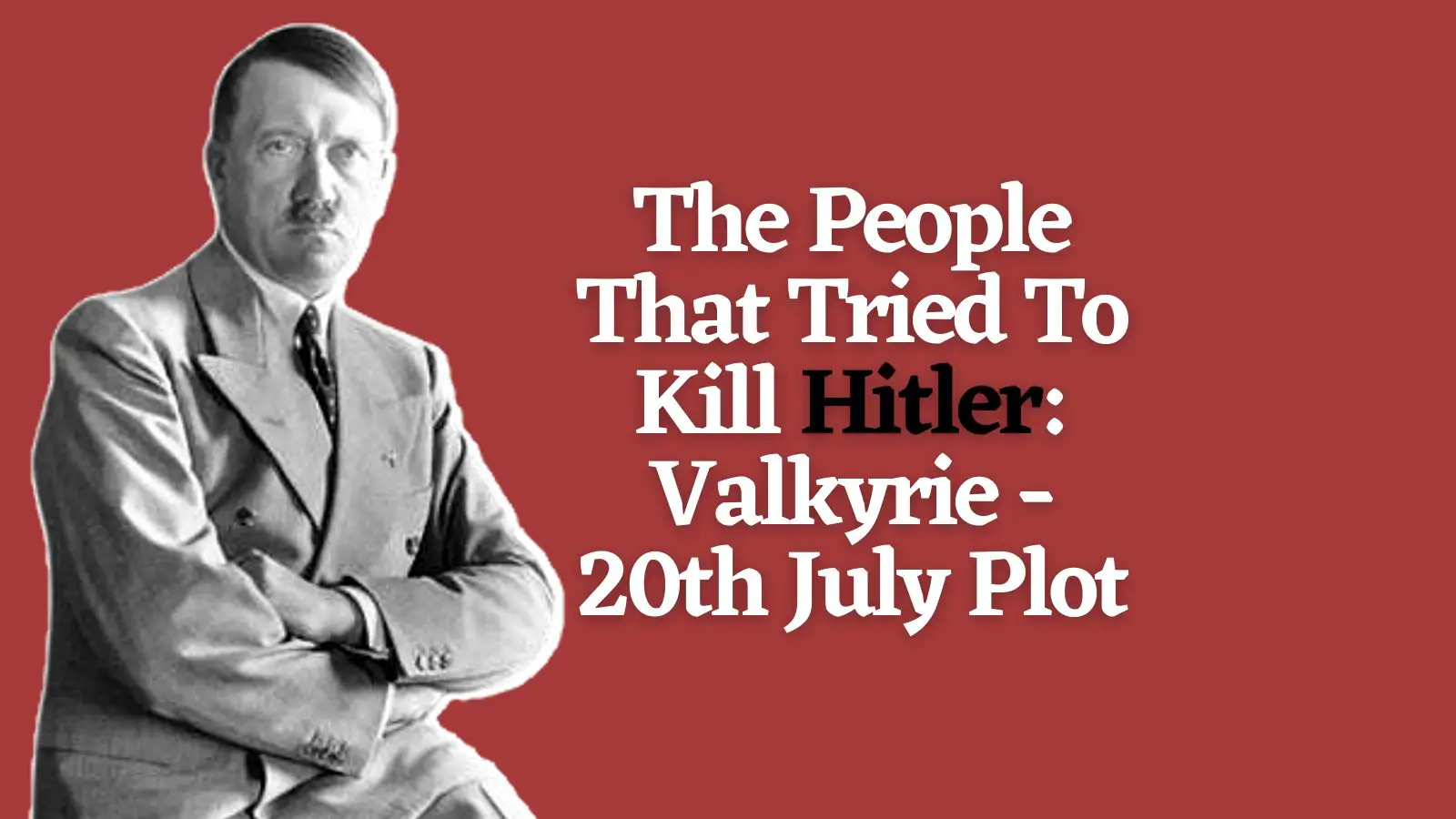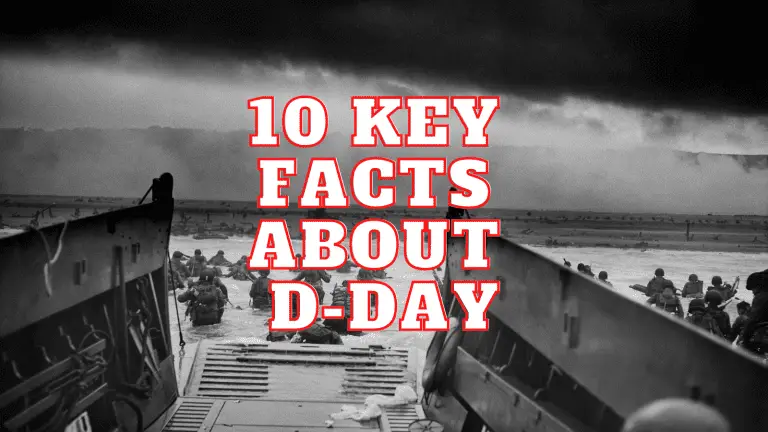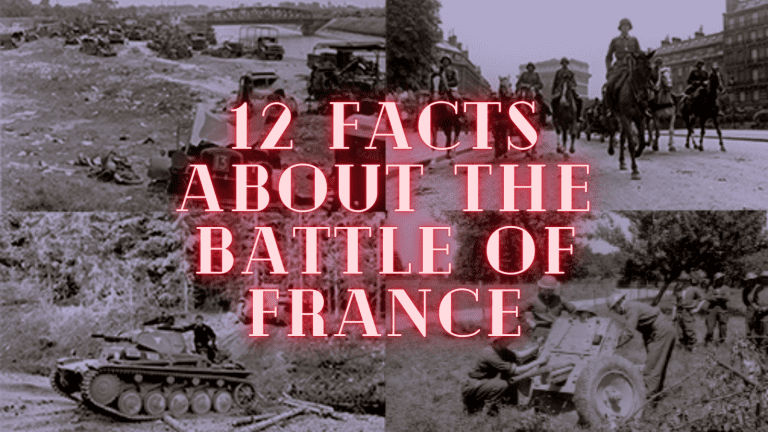The People That Tried To Kill Hitler: Valkyrie – 20th July Plot
[et_pb_section fb_built=”1″ _builder_version=”4.14.8″ _module_preset=”default” global_colors_info=”{}”][et_pb_row _builder_version=”4.14.8″ _module_preset=”default” global_colors_info=”{}”][et_pb_column type=”4_4″ _builder_version=”4.14.8″ _module_preset=”default” global_colors_info=”{}”][et_pb_text _builder_version=”4.14.8″ _module_preset=”default” global_colors_info=”{}”]
What is now known in history as Operation Valkyrie was originally a reference to just a part of the conspiracy to assassinate the Fuhrer of Nazi Germany, Adolf Hitler. We now recognise Valkyrie as associated with the entire event. But what was the thinking and who were the individuals behind the 20th of July 1944 attempted assassination?
The planned assassination aimed to free Germany from the political control of the Nazi Party and the SS and bring about peace with the Western allies. The plan involved a good many individuals who formed the German resistance. The assassination attempt and intended military coup d’état failed and resulted in the arrest of over 7,000 people and the execution of 4,980 of those arrested.
Operation Valkyrie played out inside The Wolfsschanze, the Wolf’s Lair field headquarters near Rastenburg, and Hitler’s secret headquarters on the Eastern Front. These are the people who were instrumental in its planning and execution.
[/et_pb_text][/et_pb_column][/et_pb_row][et_pb_row column_structure=”1_5,3_5,1_5″ _builder_version=”4.14.8″ _module_preset=”default” global_colors_info=”{}”][et_pb_column type=”1_5″ _builder_version=”4.14.8″ _module_preset=”default” global_colors_info=”{}”][/et_pb_column][et_pb_column type=”3_5″ _builder_version=”4.14.8″ _module_preset=”default” global_colors_info=”{}”][et_pb_image src=”http://historywithhenry.com/wp-content/uploads/2022/03/1-6.png” alt=”People That Tried To Kill Hitler” title_text=”1″ _builder_version=”4.14.8″ _module_preset=”default” global_colors_info=”{}”][/et_pb_image][/et_pb_column][et_pb_column type=”1_5″ _builder_version=”4.14.8″ _module_preset=”default” global_colors_info=”{}”][/et_pb_column][/et_pb_row][et_pb_row _builder_version=”4.14.8″ _module_preset=”default” global_colors_info=”{}”][et_pb_column type=”4_4″ _builder_version=”4.14.8″ _module_preset=”default” global_colors_info=”{}”][et_pb_text _builder_version=”4.14.8″ _module_preset=”default” global_colors_info=”{}”]
Claus Von Stauffenberg
[/et_pb_text][/et_pb_column][/et_pb_row][et_pb_row column_structure=”1_5,3_5,1_5″ _builder_version=”4.14.8″ _module_preset=”default” global_colors_info=”{}”][et_pb_column type=”1_5″ _builder_version=”4.14.8″ _module_preset=”default” global_colors_info=”{}”][/et_pb_column][et_pb_column type=”3_5″ _builder_version=”4.14.8″ _module_preset=”default” global_colors_info=”{}”][et_pb_image src=”http://historywithhenry.com/wp-content/uploads/2022/03/2-6.jpg” alt=”People That Tried To Kill Hitler” title_text=”2″ _builder_version=”4.14.8″ _module_preset=”default” global_colors_info=”{}”][/et_pb_image][/et_pb_column][et_pb_column type=”1_5″ _builder_version=”4.14.8″ _module_preset=”default” global_colors_info=”{}”][/et_pb_column][/et_pb_row][et_pb_row _builder_version=”4.14.8″ _module_preset=”default” global_colors_info=”{}”][et_pb_column type=”4_4″ _builder_version=”4.14.8″ _module_preset=”default” global_colors_info=”{}”][et_pb_text _builder_version=”4.14.8″ _module_preset=”default” global_colors_info=”{}”]
Claus Schenk Graf von Stauffenberg was 36 years old and a Colonel in the German army on the 20th of July 1944 when he walked into the remarkably secure complex tucked away in the forest in East Prussia. Although he was officially present for the daily briefing between the Fuhrer and the Reich’s high command, his mission was to slay Adolf Hitler. To this end, he smuggled a deadly bomb into the lair, hidden in his briefcase.
Count Schenk von Stauffenberg served nobly in the German army after enlisting in 1926. His deployment to the front in the Soviet Union soon saw him disheartened by the brutal policies implemented after the German occupation against the Slavs and Jews. His request for a transfer saw him assume active service in the North African campaign as a staff officer in a panzer or armoured division. It was here that he lost his left eye, right hand, and two fingers of his left hand in battle during April 1943.
He made the decision to take a stance to eliminate Hitler while he was recovering from these injuries. He was a leader among the growing conspiracy of army officers who were disillusioned with Hitler. As such he took on the task of carrying out the actual assassination. In July 1944, he had earned a promotion to colonel and was reassigned to the chief of staff to the Reserve Army Command which meant he attended the situation conferences with Hitler. Two unsuccessful assassination attempts had already been attempted before Stauffenberg managed to get the briefcase bomb into the Wolf’s Lair. It was not to be, however, and Hitler survived the attempt on his life.
The plan included a simultaneous coup in Berlin which also failed. Consequently, Stauffenberg was immediately executed in Berlin shortly before one on the morning of 21 July 1944 along with some of his co-conspirators. Stauffenberg was third in line to be executed. Lieutenant von Haeften, also in line to be executed, stepped between the firing squad and Stauffenberg and was shot in his stead. Stauffenberg announced, “Long live the secret Germany!” immediately before facing the firing squad, referring to the anti-Nazi circle.
The loss of life did not end there, though, and thousands went on to die in the bloody aftermath of Operation Valkyrie. Stauffenberg was immediately buried with military honours along with his fellow officers. But the very next day the SS exhumed his body, and he was stripped of his medals and insignia before being cremated.
[/et_pb_text][/et_pb_column][/et_pb_row][et_pb_row _builder_version=”4.14.8″ _module_preset=”default” global_colors_info=”{}”][et_pb_column type=”4_4″ _builder_version=”4.14.8″ _module_preset=”default” global_colors_info=”{}”][et_pb_text _builder_version=”4.14.8″ _module_preset=”default” global_colors_info=”{}”]
General Friedrich Fromm
[/et_pb_text][/et_pb_column][/et_pb_row][et_pb_row column_structure=”1_5,3_5,1_5″ _builder_version=”4.14.8″ _module_preset=”default” global_colors_info=”{}”][et_pb_column type=”1_5″ _builder_version=”4.14.8″ _module_preset=”default” global_colors_info=”{}”][/et_pb_column][et_pb_column type=”3_5″ _builder_version=”4.14.8″ _module_preset=”default” global_colors_info=”{}”][et_pb_image src=”http://historywithhenry.com/wp-content/uploads/2022/03/Bundesarchiv_Bild_146-1969-168-07_Friedrich_Fromm.jpg” alt=”People That Tried To Kill Hitler” title_text=”Friedrich Fromm” align=”center” _builder_version=”4.14.8″ _module_preset=”default” width=”80%” max_height=”600px” global_colors_info=”{}”][/et_pb_image][/et_pb_column][et_pb_column type=”1_5″ _builder_version=”4.14.8″ _module_preset=”default” global_colors_info=”{}”][/et_pb_column][/et_pb_row][et_pb_row _builder_version=”4.14.8″ _module_preset=”default” global_colors_info=”{}”][et_pb_column type=”4_4″ _builder_version=”4.14.8″ _module_preset=”default” global_colors_info=”{}”][et_pb_text _builder_version=”4.14.8″ _module_preset=”default” global_colors_info=”{}”]
Commander-in-Chief of the Replacement Army, Fromm saved his own bacon after his involvement in Operation Valkyrie by turning in his co-conspirators. During the impromptu court-martial that followed, the ringleaders were condemned to death. A makeshift firing squad executed Stauffenberg, his aide first Lieutenant Werner von Haeften, General Friedrich Olbricht, and Colonel Albrecht Mertz von Quirnheim in the courtyard of the Bendlerblock. The midnight execution was carried out by the light of the headlights of a truck. Fromm gave orders for his former co-conspirators to be buried straightaway with military honours in the Alter St.-Matthäus-Kirchhof in Berlin’s Schöneberg district.
[/et_pb_text][/et_pb_column][/et_pb_row][et_pb_row _builder_version=”4.14.8″ _module_preset=”default” global_colors_info=”{}”][et_pb_column type=”4_4″ _builder_version=”4.14.8″ _module_preset=”default” global_colors_info=”{}”][et_pb_text _builder_version=”4.14.8″ _module_preset=”default” global_colors_info=”{}”]
Hans Oster
[/et_pb_text][/et_pb_column][/et_pb_row][et_pb_row column_structure=”1_5,3_5,1_5″ _builder_version=”4.14.8″ _module_preset=”default” global_colors_info=”{}”][et_pb_column type=”1_5″ _builder_version=”4.14.8″ _module_preset=”default” global_colors_info=”{}”][/et_pb_column][et_pb_column type=”3_5″ _builder_version=”4.14.8″ _module_preset=”default” global_colors_info=”{}”][et_pb_image src=”http://historywithhenry.com/wp-content/uploads/2022/03/Bundesarchiv_Bild_146-2004-0007_Hans_Oster.jpg” alt=”People That Tried To Kill Hitler” title_text=”Hans Oster” align=”center” _builder_version=”4.14.8″ _module_preset=”default” max_width=”80%” global_colors_info=”{}”][/et_pb_image][/et_pb_column][et_pb_column type=”1_5″ _builder_version=”4.14.8″ _module_preset=”default” global_colors_info=”{}”][/et_pb_column][/et_pb_row][et_pb_row _builder_version=”4.14.8″ _module_preset=”default” global_colors_info=”{}”][et_pb_column type=”4_4″ _builder_version=”4.14.8″ _module_preset=”default” global_colors_info=”{}”][et_pb_text _builder_version=”4.14.8″ _module_preset=”default” global_colors_info=”{}”]
Oster served as a Counterintelligence Officer in the Reichswehr, the Reich’s armed forces, having been recalled to active duty. His promotion to lieutenant colonel in 1935 was followed in 1939 by his promotion to colonel when he took up the position as head of the Central Department of the Counter Intelligence Office. By 1938, his antipathy was turned by the Blomberg–Fritsch Affair and Kristallnacht into a hatred of Nazism. He was set henceforth on his course as the saviour of the persecuted Jews.
Oster and Generaloberst Ludwig Beck, Chief of the General Staff, first met during the Fritsch crisis. This is when connections were forged for the Oster Conspiracy of September 1938. Oster first conspired to assassinate Hitler and overthrow the Reich in 1938. He was at the heart of the resistance group in the Counterintelligence community and undertook key duties in every planned uprising or coup attempt. In 1940, he updated the Dutch military attaché in Berlin about Germany’s intended invasion of the Netherlands. In 1941 his promotion to major general saw him appointed as chief of staff of the Office for Foreign Affairs/Counterintelligence of the Armed Forces High Command. He resigned after being implicated in foreign-currency dealings in 1943 and remained under Gestapo surveillance.
Oster was immediately arrested following the unsuccessful coup of July 20, 1944. Hitler ordered him to be sentenced to death on April 8, 1945, a sentence executed by an SS summary court in the Flossenbürg concentration camp. He was murdered the next day.
[/et_pb_text][/et_pb_column][/et_pb_row][et_pb_row _builder_version=”4.14.8″ _module_preset=”default” global_colors_info=”{}”][et_pb_column type=”4_4″ _builder_version=”4.14.8″ _module_preset=”default” global_colors_info=”{}”][et_pb_text _builder_version=”4.14.8″ _module_preset=”default” global_colors_info=”{}”]
Ludwig Beck
[/et_pb_text][/et_pb_column][/et_pb_row][et_pb_row column_structure=”1_5,3_5,1_5″ _builder_version=”4.14.8″ _module_preset=”default” global_colors_info=”{}”][et_pb_column type=”1_5″ _builder_version=”4.14.8″ _module_preset=”default” global_colors_info=”{}”][/et_pb_column][et_pb_column type=”3_5″ _builder_version=”4.14.8″ _module_preset=”default” global_colors_info=”{}”][et_pb_image src=”http://historywithhenry.com/wp-content/uploads/2022/03/Bundesarchiv_Bild_146-1980-033-04_Ludwig_Beck.jpg” alt=”People That Tried To Kill Hitler” title_text=”Bundesarchiv_Bild_146-1980-033-04,_Ludwig_Beck” align=”center” _builder_version=”4.14.8″ _module_preset=”default” max_width=”80%” global_colors_info=”{}”][/et_pb_image][/et_pb_column][et_pb_column type=”1_5″ _builder_version=”4.14.8″ _module_preset=”default” global_colors_info=”{}”][/et_pb_column][/et_pb_row][et_pb_row _builder_version=”4.14.8″ _module_preset=”default” global_colors_info=”{}”][et_pb_column type=”4_4″ _builder_version=”4.14.8″ _module_preset=”default” global_colors_info=”{}”][et_pb_text _builder_version=”4.14.8″ _module_preset=”default” global_colors_info=”{}”]
Beck had an active career in the Reichswehr after the First World War after joining the Prussian army as a cadet in March 1898. In October 1933 he was head of the Truppenamt in the defence ministry and was promoted to Chief of Army General Staff in 1935. He resigned as a conscientious objector after trying to sway senior generals to resign en masse to avert the impending war in Europe. Before this, he had used papers, memoranda, and presentations to influence Hitler’s foreign policy, going back to 1938. After stepping down from office, he was an important figure in the military and civilian opposition. Rejecting the risk of war, Beck rallied with the likes of Carl Friedrich Goerdeler who tried to work towards a new political order in Germany. The goal first and foremost was to reinstate the rule of law and terminate the war. Beck assisted in strategizing the assassination attempt on Hitler and looked to become head of state in Hitler’s wake. After the failed coup on July 20, 1944, Ludwig Beck made an unsuccessful attempt at suicide. Colonel-General Friedrich Fromm subsequently ordered a sergeant of the Wehrmacht to shoot and kill the severely injured conspirator.
[/et_pb_text][/et_pb_column][/et_pb_row][et_pb_row _builder_version=”4.14.8″ _module_preset=”default” global_colors_info=”{}”][et_pb_column type=”4_4″ _builder_version=”4.14.8″ _module_preset=”default” global_colors_info=”{}”][et_pb_text _builder_version=”4.14.8″ _module_preset=”default” global_colors_info=”{}”]
Erwin Von Witzleben
[/et_pb_text][/et_pb_column][/et_pb_row][et_pb_row column_structure=”1_5,3_5,1_5″ _builder_version=”4.14.8″ _module_preset=”default” global_colors_info=”{}”][et_pb_column type=”1_5″ _builder_version=”4.14.8″ _module_preset=”default” global_colors_info=”{}”][/et_pb_column][et_pb_column type=”3_5″ _builder_version=”4.14.8″ _module_preset=”default” global_colors_info=”{}”][et_pb_image src=”http://historywithhenry.com/wp-content/uploads/2022/03/Bundesarchiv_Bild_146-1978-043-13_Erwin_v._Witzleben.jpg” alt=”People That Tried To Kill Hitler” title_text=”Erwin v. Witzleben” align=”center” _builder_version=”4.14.8″ _module_preset=”default” max_width=”80%” global_colors_info=”{}”][/et_pb_image][/et_pb_column][et_pb_column type=”1_5″ _builder_version=”4.14.8″ _module_preset=”default” global_colors_info=”{}”][/et_pb_column][/et_pb_row][et_pb_row _builder_version=”4.14.8″ _module_preset=”default” global_colors_info=”{}”][et_pb_column type=”4_4″ _builder_version=”4.14.8″ _module_preset=”default” global_colors_info=”{}”][et_pb_text _builder_version=”4.14.8″ _module_preset=”default” global_colors_info=”{}”]
Witzleben was assigned to the post of Adjutant of the 19th Reserve Brigade at the start of World War One. He was awarded the Iron Cross after serving on the Western Front and in April 1917 assumed command of a battalion in the 6th Infantry. A year later he became General Staff Officer to the 108th Infantry Division. By January 1921 he was commander of the 8th Machine Gun Company. He was on the General Staff of the Wehrkries, 12th Cavalry Regiment, and Infantry Command III. By 1929 he was Chief of Staff of Wehrkries IV, a position he held until 1931 when he became commander of the 8th Infantry Regiment until 1933. A year on, he was promoted to major general and appointed commander of Wehrkries III, replacing General Werner von Fitsch.
After Kurt von Schleicher’s death following the Night of the Long Knives, Witzleben demanded a military inquiry together with Erich von Manstein, Wilhelm Leeb and Gerd von Rundstedt. The defence minister rejected this demand from the opponent of Adolf Hitler and his government in Nazi Germany.
General Werner von Fitsch was dismissed as Commander in Chief of the Army on a fabricated charge of homosexuality which infuriated his friend Witzleben who was by then a steadfast anti-Nazi. The idea of a military coup against Hitler was being entertained and he was forced into early retirement in 1938 when the Gestapo learnt of his criticisms of Hitler. Witzleben plotted with like-minded anti-Nazis and a military coup was in the offing.
Witzleben was recalled to the German Army when World War II erupted and took command of the 1st Amry in the invasion of France. His troops occupied Alsace-Lorraine and he was promoted to the rank of field marshal. He remained in France and once again began plotting against Adolf Hitler after Operation Barbarossa failed. He became critical of the German government and was informed on by the Gestapo which resulted in him being called back to Germany in 1942, to retire.
For two years Witzleben kept in touch with anti-Nazis from inside his country estate. He participated in the July Plot in 1944. Thinking that Hitler had been killed by Claus von Stauffenberg’s bomb, Witzleben became Commander in Chief of the Armed Forces and Erich Hoepner took up the position as Commander of the Home Army. Witzleben was arrested on July 21, 1944, found guilty of treason and executed by being hung by piano wire from a meat hook on August 8, 1944.
[/et_pb_text][/et_pb_column][/et_pb_row][et_pb_row _builder_version=”4.14.8″ _module_preset=”default” global_colors_info=”{}”][et_pb_column type=”4_4″ _builder_version=”4.14.8″ _module_preset=”default” global_colors_info=”{}”][et_pb_text _builder_version=”4.14.8″ _module_preset=”default” global_colors_info=”{}”]
Carl Goerdeler
[/et_pb_text][/et_pb_column][/et_pb_row][et_pb_row column_structure=”1_5,3_5,1_5″ _builder_version=”4.14.8″ _module_preset=”default” global_colors_info=”{}”][et_pb_column type=”1_5″ _builder_version=”4.14.8″ _module_preset=”default” global_colors_info=”{}”][/et_pb_column][et_pb_column type=”3_5″ _builder_version=”4.14.8″ _module_preset=”default” global_colors_info=”{}”][et_pb_image src=”http://historywithhenry.com/wp-content/uploads/2022/03/Bundesarchiv_Bild_146-1993-069-06_Carl_Friedrich_Goerdeler.jpg” alt=”People That Tried To Kill Hitler” title_text=”Bundesarchiv_Bild_146-1993-069-06,_Carl_Friedrich_Goerdeler” align=”center” _builder_version=”4.14.8″ _module_preset=”default” max_width=”80%” global_colors_info=”{}”][/et_pb_image][/et_pb_column][et_pb_column type=”1_5″ _builder_version=”4.14.8″ _module_preset=”default” global_colors_info=”{}”][/et_pb_column][/et_pb_row][et_pb_row _builder_version=”4.14.8″ _module_preset=”default” global_colors_info=”{}”][et_pb_column type=”4_4″ _builder_version=”4.14.8″ _module_preset=”default” global_colors_info=”{}”][et_pb_text _builder_version=”4.14.8″ _module_preset=”default” global_colors_info=”{}”]
Goerdeler held the position of mayor of Leipzig in 1930. He was in office in 1933 when Adolf Hitler came to power but resigned in 1934 after a disagreement with Hitler over his policies. He openly opposed German rearmament and the Nuremberg Laws. In his position as mayor of Leipzig, he would not remove the statue of the Jewish composer Felix Mendelssohn and refused to fly the swastika flag over the city hall.
After resigning as mayor in 1937, he travelled Europe as an overseas representative of the Bosche company for two years. By 1938, he had met Winston Churchill as well as important political figures in Britain and France. He encouraged governments not to make too many concessions to Hitler and was shocked by the Munich Agreement which he claimed would lead to a war in Europe.
Goerdeler encouraged a negotiated peace with the Allies during World War II but was disappointed by Britain’s take that the war would only end with Germany’s unconditional surrender. By 1940, he was convinced that Hitler could only be overthrown by the German armed forces. In collaboration with Ludwig Beck, they could not garner enough senior military leaders to hold a coup. He agreed to take part in Operation Valkyrie in 1944, known as the July Plot, agreeing to take over as chancellor after Hitler’s assassination. He was warned on July 18, 1944, that the Gestapo knew that he was conspiring to kill Hitler. He was arrested on 12 August, interrogated and tortured for five months, and finally executed on the 2nd of February 1945.
[/et_pb_text][/et_pb_column][/et_pb_row][et_pb_row _builder_version=”4.14.8″ _module_preset=”default” global_colors_info=”{}”][et_pb_column type=”4_4″ _builder_version=”4.14.8″ _module_preset=”default” global_colors_info=”{}”][et_pb_text _builder_version=”4.14.8″ _module_preset=”default” global_colors_info=”{}”]
Helmuth James Von Moltke
[/et_pb_text][/et_pb_column][/et_pb_row][et_pb_row column_structure=”1_5,3_5,1_5″ _builder_version=”4.14.8″ _module_preset=”default” global_colors_info=”{}”][et_pb_column type=”1_5″ _builder_version=”4.14.8″ _module_preset=”default” global_colors_info=”{}”][/et_pb_column][et_pb_column type=”3_5″ _builder_version=”4.14.8″ _module_preset=”default” global_colors_info=”{}”][et_pb_image src=”http://historywithhenry.com/wp-content/uploads/2022/03/HelmuthvonMoltkeJan1945.jpg” alt=”People That Tried To Kill Hitler” title_text=”HelmuthvonMoltkeJan1945″ align=”center” _builder_version=”4.14.8″ _module_preset=”default” max_width=”80%” global_colors_info=”{}”][/et_pb_image][/et_pb_column][et_pb_column type=”1_5″ _builder_version=”4.14.8″ _module_preset=”default” global_colors_info=”{}”][/et_pb_column][/et_pb_row][et_pb_row _builder_version=”4.14.8″ _module_preset=”default” global_colors_info=”{}”][et_pb_column type=”4_4″ _builder_version=”4.14.8″ _module_preset=”default” global_colors_info=”{}”][et_pb_text _builder_version=”4.14.8″ _module_preset=”default” global_colors_info=”{}”]
Starting in 1925, Helmuth James Graf von Moltke studied law and political science in Berlin and ran a voluntary work camp in Silesia for students, farmers, and industrial workers. He was a sympathiser of the democratic forces and openly criticised Hitler’s rise to power. In 1933 he refused his appointment as a judge and in 1935 set up an attorney’s office in Berlin. He planned to open an office in London having trained as a British barrister between 1935 and 1938 but his plans were interrupted by the Second World War.
He was drafted as a war administration counsellor in the Office for Foreign Affairs/Counterintelligence in the Armed Forces High Command in Berlin. He tried to fight injustice and arbitrariness and advocated for the humane treatment of prisoners of war and the observance of international law. In 1940, Peter Graf Yorck von Wartenburg and Moltke led what became known as the Kreisau Circle, entering into discussions in Berlin and Kreisau.
He was arrested on January 19, 1944, for warning members of the Solf Circle that the Gestapo had them under surveillance. His plans for a coup against Hitler were however only brought to light after Operation Valkyrie failed. On January 11th, 1945, the People’s Court sentenced Moltke to death and he was murdered in Berlin-Plötzensee on the 23rd of January 1945.
[/et_pb_text][/et_pb_column][/et_pb_row][et_pb_row _builder_version=”4.14.8″ _module_preset=”default” global_colors_info=”{}”][et_pb_column type=”4_4″ _builder_version=”4.14.8″ _module_preset=”default” global_colors_info=”{}”][et_pb_text _builder_version=”4.14.8″ _module_preset=”default” global_colors_info=”{}”]
Henning Von Tresckow
[/et_pb_text][/et_pb_column][/et_pb_row][et_pb_row column_structure=”1_5,3_5,1_5″ _builder_version=”4.14.8″ _module_preset=”default” global_colors_info=”{}”][et_pb_column type=”1_5″ _builder_version=”4.14.8″ _module_preset=”default” global_colors_info=”{}”][/et_pb_column][et_pb_column type=”3_5″ _builder_version=”4.14.8″ _module_preset=”default” global_colors_info=”{}”][et_pb_image src=”http://historywithhenry.com/wp-content/uploads/2022/03/Bundesarchiv_Bild_146-1976-130-53_Henning_v._Tresckow.jpg” alt=”People That Tried To Kill Hitler” title_text=”Bundesarchiv_Bild_146-1976-130-53,_Henning_v._Tresckow” align=”center” _builder_version=”4.14.8″ _module_preset=”default” max_width=”80%” global_colors_info=”{}”][/et_pb_image][/et_pb_column][et_pb_column type=”1_5″ _builder_version=”4.14.8″ _module_preset=”default” global_colors_info=”{}”][/et_pb_column][/et_pb_row][et_pb_row _builder_version=”4.14.8″ _module_preset=”default” global_colors_info=”{}”][et_pb_column type=”4_4″ _builder_version=”4.14.8″ _module_preset=”default” global_colors_info=”{}”][et_pb_text _builder_version=”4.14.8″ _module_preset=”default” global_colors_info=”{}”]
Tresckow initially welcomed the National Socialist occupation, but his scepticism of Hitler’s policies grew. After Kristallnacht and the November pogroms of 1938 he resolutely opposed the regime. Thanks to him, connections between the military resistance and Ludwig Beck and Carl Goerdeler were strengthened and he assumed a dominant role among the officers of the opposition. He saw the plans to assassinate Hitler as a form of self-defence and any opposition to the Reich as a moral stance.
Tresckow was promoted to lieutenant colonel in 1940 and transferred as First General Staff Officer to Army Group B. He was promoted in 1942 to colonel in the General Staff. He tried to organise a few attempts on Hitler’s life in mid-1942 which were always aborted and in July 1943 transferred to the “Führer’s reserve”. He took the opportunity to work on the Valkyrie plans for a coup while in Berlin.
By 1944, he held the rank of major general and kept in contact with the conspirators without actually directly preparing the coup. When he found out that the July Plot and coup had failed, he took his own life on July 21, 1944, at the front near Ostrów.
[/et_pb_text][/et_pb_column][/et_pb_row][et_pb_row _builder_version=”4.14.8″ _module_preset=”default” global_colors_info=”{}”][et_pb_column type=”4_4″ _builder_version=”4.14.8″ _module_preset=”default” global_colors_info=”{}”][et_pb_text _builder_version=”4.14.8″ _module_preset=”default” global_colors_info=”{}”]
Fredrich Olbricht
[/et_pb_text][/et_pb_column][/et_pb_row][et_pb_row column_structure=”1_5,3_5,1_5″ _builder_version=”4.14.8″ _module_preset=”default” global_colors_info=”{}”][et_pb_column type=”1_5″ _builder_version=”4.14.8″ _module_preset=”default” global_colors_info=”{}”][/et_pb_column][et_pb_column type=”3_5″ _builder_version=”4.14.8″ _module_preset=”default” global_colors_info=”{}”][et_pb_image src=”http://historywithhenry.com/wp-content/uploads/2022/03/Bundesarchiv_Bild_146-1981-072-61_Friedrich_Olbricht.jpg” alt=”People That Tried To Kill Hitler” title_text=”Bundesarchiv_Bild_146-1981-072-61,_Friedrich_Olbricht” align=”center” _builder_version=”4.14.8″ _module_preset=”default” max_width=”80%” global_colors_info=”{}”][/et_pb_image][/et_pb_column][et_pb_column type=”1_5″ _builder_version=”4.14.8″ _module_preset=”default” global_colors_info=”{}”][/et_pb_column][/et_pb_row][et_pb_row _builder_version=”4.14.8″ _module_preset=”default” global_colors_info=”{}”][et_pb_column type=”4_4″ _builder_version=”4.14.8″ _module_preset=”default” global_colors_info=”{}”][et_pb_text _builder_version=”4.14.8″ _module_preset=”default” global_colors_info=”{}”]
Olbricht trained as an officer of the General Staff and in 1926 went on to take up an assignment in the Reichwehr Ministry, Department of Foreign Armies. In 1933 he was chief of staff based in Dresden. In March 1940, he headed the Allgemeines Heeresamt (General Army Office) of the Army High Command in Berlin and from 1943 also headed the Wehrersatzamt (Recruiting Office) of the Armed Forces High Command.
He was involved from 1942 in preparing the Valkyrie plans, collaborating with Ludwig Beck, Carl Goerdeler, and civilian opposition groups. After repeated postponements, Olbricht ordered the commencement of Operation Valkyrie in Berlin on July 20, 1944. Following its failure, Olbricht was executed by a firing squad in the inner courtyard of the Bendler Block together with Stauffenberg, Mertz von Quirnheim, and Werner von Haeften.
[/et_pb_text][/et_pb_column][/et_pb_row][et_pb_row _builder_version=”4.14.8″ _module_preset=”default” global_colors_info=”{}”][et_pb_column type=”4_4″ _builder_version=”4.14.8″ _module_preset=”default” global_colors_info=”{}”][et_pb_text _builder_version=”4.14.8″ _module_preset=”default” global_colors_info=”{}”]
Magarethe Von Oven
[/et_pb_text][/et_pb_column][/et_pb_row][et_pb_row _builder_version=”4.14.8″ _module_preset=”default” global_colors_info=”{}”][et_pb_column type=”4_4″ _builder_version=”4.14.8″ _module_preset=”default” global_colors_info=”{}”][et_pb_text _builder_version=”4.14.8″ _module_preset=”default” global_colors_info=”{}”]
In 1925, Margarethe was employed in the Defence Ministry and relocated to Moscow in 1928 for six months. In the summer of 1943, Henning von Tresckow requested she be employed in his office. He trusted her implicitly as the childhood friend of his wife. Tresckow returned to the front, and Margarethe von Oven became the mediator for the Berlin plotters.
After Operation Valkyrie failed on 20 July 1944, she was jailed for two weeks before returning to her office. She survived the war and went on to work as a receptionist in Switzerland and then Germany. In 1954, she was employed by the House of Brandenburg-Prussia and in 1955 she married Wilfred Graf von Hardenberg.
[/et_pb_text][/et_pb_column][/et_pb_row][et_pb_row _builder_version=”4.14.8″ _module_preset=”default” global_colors_info=”{}”][et_pb_column type=”4_4″ _builder_version=”4.14.8″ _module_preset=”default” global_colors_info=”{}”][et_pb_text _builder_version=”4.14.8″ _module_preset=”default” custom_padding=”3px|||||” global_colors_info=”{}”]
Helmuth Stieff
[/et_pb_text][/et_pb_column][/et_pb_row][et_pb_row column_structure=”1_5,3_5,1_5″ _builder_version=”4.14.8″ _module_preset=”default” global_colors_info=”{}”][et_pb_column type=”1_5″ _builder_version=”4.14.8″ _module_preset=”default” global_colors_info=”{}”][/et_pb_column][et_pb_column type=”3_5″ _builder_version=”4.14.8″ _module_preset=”default” global_colors_info=”{}”][et_pb_image src=”http://historywithhenry.com/wp-content/uploads/2022/03/Bundesarchiv_Bild_101I-146-1547-17_Hellmuth_Stieff.jpg” alt=”People That Tried To Kill Hitler” title_text=”Hellmuth Stieff” align=”center” _builder_version=”4.14.8″ _module_preset=”default” max_width=”80%” global_colors_info=”{}”][/et_pb_image][/et_pb_column][et_pb_column type=”1_5″ _builder_version=”4.14.8″ _module_preset=”default” global_colors_info=”{}”][/et_pb_column][/et_pb_row][et_pb_row _builder_version=”4.14.8″ _module_preset=”default” global_colors_info=”{}”][et_pb_column type=”4_4″ _builder_version=”4.14.8″ _module_preset=”default” global_colors_info=”{}”][et_pb_text _builder_version=”4.14.8″ _module_preset=”default” global_colors_info=”{}”]
After training as an officer after the First World War, Stieff transferred to the general staff in 1938. He became chief of the Organization Department in the Army High Command in October 1942. Talks with Henning von Tresckow in the summer of 1943 resulted in them collaborating to assassinate Hitler. Although he tried to convince General Field Marshal Günther von Kluge to join them in the coup attempt and safeguarded explosives for the assassination, he refused to personally carry out the assassination.
He was arrested on the night of July 20, 1944, in East Prussia and severely interrogated by the Gestapo. The People’s Court sentenced him to death on August 8, 1944, and he was murdered on the same day in Berlin-Plötzensee.
[/et_pb_text][/et_pb_column][/et_pb_row][et_pb_row _builder_version=”4.14.8″ _module_preset=”default” global_colors_info=”{}”][et_pb_column type=”4_4″ _builder_version=”4.14.8″ _module_preset=”default” global_colors_info=”{}”][et_pb_text _builder_version=”4.14.8″ _module_preset=”default” global_colors_info=”{}”]
Erich Fellgiebel
[/et_pb_text][/et_pb_column][/et_pb_row][et_pb_row column_structure=”1_5,3_5,1_5″ _builder_version=”4.14.8″ _module_preset=”default” global_colors_info=”{}”][et_pb_column type=”1_5″ _builder_version=”4.14.8″ _module_preset=”default” global_colors_info=”{}”][/et_pb_column][et_pb_column type=”3_5″ _builder_version=”4.14.8″ _module_preset=”default” global_colors_info=”{}”][et_pb_image src=”http://historywithhenry.com/wp-content/uploads/2022/03/Erich_Fellgiebel.jpg” alt=”People That Tried To Kill Hitler” title_text=”Erich_Fellgiebel” align=”center” _builder_version=”4.14.8″ _module_preset=”default” max_width=”80%” global_colors_info=”{}”][/et_pb_image][/et_pb_column][et_pb_column type=”1_5″ _builder_version=”4.14.8″ _module_preset=”default” global_colors_info=”{}”][/et_pb_column][/et_pb_row][et_pb_row _builder_version=”4.14.8″ _module_preset=”default” global_colors_info=”{}”][et_pb_column type=”4_4″ _builder_version=”4.14.8″ _module_preset=”default” global_colors_info=”{}”][et_pb_text _builder_version=”4.14.8″ _module_preset=”default” global_colors_info=”{}”]
Erich Fellgiebel was a cadet in the signal battalion in September 1905 and he took up a post as General Staff officer in Berlin after the First World War. In 1938 he became head of the army signal corps and head of armed forces communications in Armed Forces High Command. Colonel-General Ludwig Beck, his former superior, and Beck’s successor, Colonel-General Franz Halder introduced Fellgiebel to the military resistance circles.
He was key in preparing for Operation Valkyrie and was in The Wolf’s Lair on July 20, 1944. Fellgiebel had to countermand previous orders and re-establish communications when the assassination attempt failed. He was arrested on the same day in East Prussia. The People’s Court sentenced him to death on August 10, 1944, and he was murdered in Berlin-Plötzensee on 4 September 1944.
[/et_pb_text][/et_pb_column][/et_pb_row][et_pb_row _builder_version=”4.14.8″ _module_preset=”default” global_colors_info=”{}”][et_pb_column type=”4_4″ _builder_version=”4.14.8″ _module_preset=”default” global_colors_info=”{}”][et_pb_text _builder_version=”4.14.8″ _module_preset=”default” global_colors_info=”{}”]
Werner von Haeften
[/et_pb_text][/et_pb_column][/et_pb_row][et_pb_row column_structure=”1_5,3_5,1_5″ _builder_version=”4.14.8″ _module_preset=”default” global_colors_info=”{}”][et_pb_column type=”1_5″ _builder_version=”4.14.8″ _module_preset=”default” global_colors_info=”{}”][/et_pb_column][et_pb_column type=”3_5″ _builder_version=”4.14.8″ _module_preset=”default” global_colors_info=”{}”][et_pb_image src=”http://historywithhenry.com/wp-content/uploads/2022/03/3-6.jpg” alt=”People That Tried To Kill Hitler” title_text=”3″ _builder_version=”4.14.8″ _module_preset=”default” global_colors_info=”{}”][/et_pb_image][/et_pb_column][et_pb_column type=”1_5″ _builder_version=”4.14.8″ _module_preset=”default” global_colors_info=”{}”][/et_pb_column][/et_pb_row][et_pb_row _builder_version=”4.14.8″ _module_preset=”default” global_colors_info=”{}”][et_pb_column type=”4_4″ _builder_version=”4.14.8″ _module_preset=”default” global_colors_info=”{}”][et_pb_text _builder_version=”4.14.8″ _module_preset=”default” global_colors_info=”{}”]
Haeften was both an attorney and first lieutenant. He served on the eastern front where he sustained severe injuries. He was later assigned to the staff of commanding officer of the Ersatzheer (Reserve Army) and was Stauffenberg’s adjutant from November 1943 onward. It was in this role that he was pivotal in planning the assassination attempt on July 20, 1944.
Haeften and Stauffenberg flew to Hitler’s Wolf’s Lair in East Prussia where final preparations for the assassination attempt were conducted. After the bomb was detonated, Haeften and Stauffenberg managed to leave the restricted area and they escaped by air to Berlin. Haeften was executed on the night of July 20 by a firing squad in the inner courtyard of the Bendler Block, together with Stauffenberg, Friedrich Olbricht, and Albrecht Ritter Mertz von Quirnheim.
[/et_pb_text][/et_pb_column][/et_pb_row][/et_pb_section]






